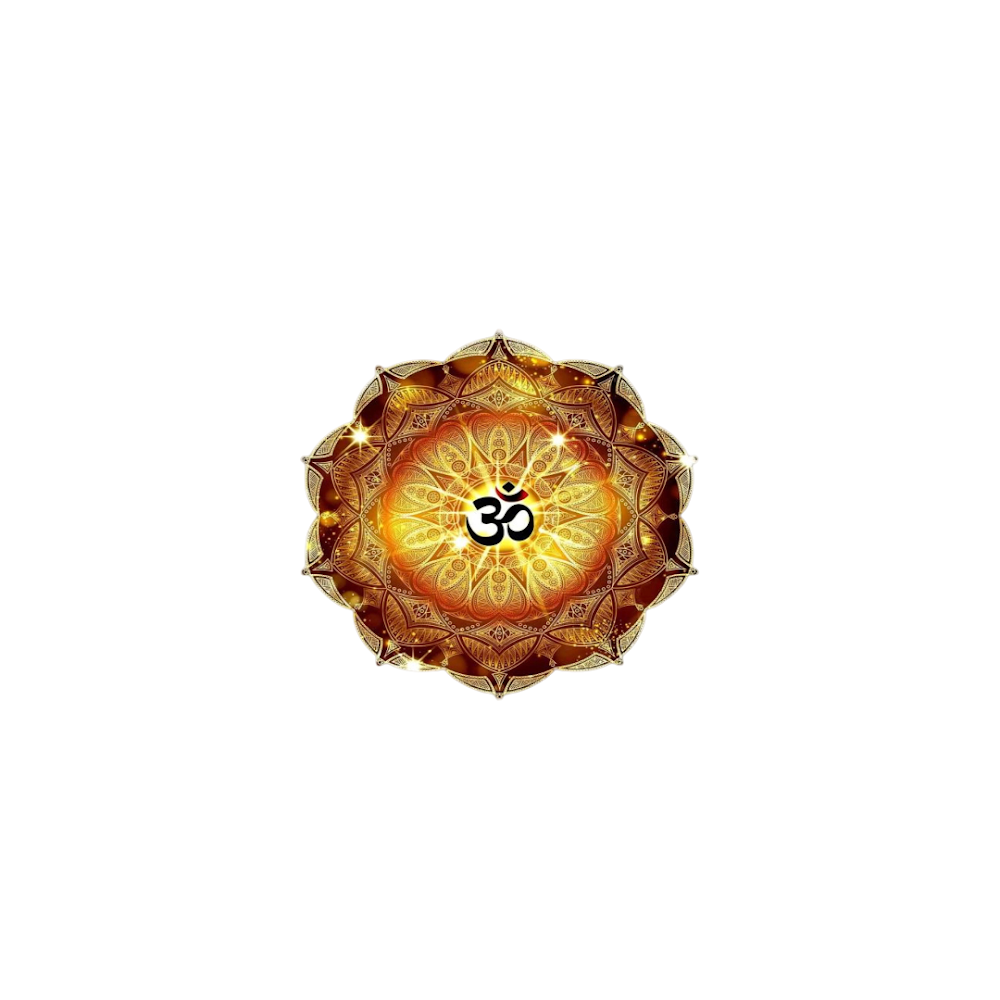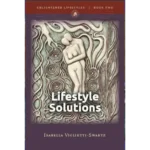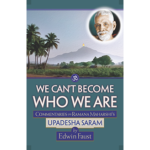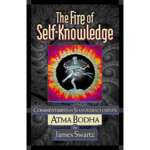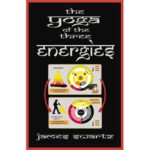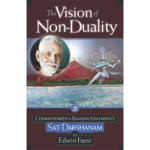It’s Always About Nididhysana
Ramji says that this teaching I give tonight is from his latest, and he says final, Vedanta scripture. Now those of you who have read his books could ask yourself, what else could there possibly be to add to what has already been so clearly and methodically written in Ramji’s books, any of which could be the final word on Vedanta? The thing is that the subject matter of Vedanta, the science of nondual Consciousness, does not change, its principles stand the test of time because it is the wisdom of the ages, beyond time. Like any of the empirical principles of physics, it cannot be interpreted and laid out in fancy new ways. But nonetheless, without in any way altering the integrity of the teachings, James has done so much to deliver the nondual teachings in clear, accessible and almost, Sanskrit free English. More so in this latest book, which is as yet, untitled. It is the whole methodology in clear English, especially designed as a hand book for those who want to teach Vedanta, or just be confident in elucidating its core teachings. In generations to come, those as yet unborn today will be reading and listening to Ramji unfold these infallible teachings, removing their ignorance and helping them stand firm in the bliss of their true nature.
We often talk about the fundamental requirements for self-inquiry, which are first and foremost understanding the terminology, developing the necessary qualifications and being properly taught. But what we focus most on the most, no matter where you are situated in your inquiry, it always comes down to nididhysana – putting the teachings into practice. And as I pointed out last Sunday, here we run smack into our humanity. Though we know it’s not who we are, our humanity does not simply disappear.
Though Nididhysana means Self-actualization, it comes down to meditation. You can meditate, meaning to dwell intensely on a particular topic, before Self-realization and you can meditate after Self-realization. After Self-realization is called nididhysana because the topic is no longer who am I? That doubt has been laid to rest during the manana or Self-realization phase. I know beyond a shadow of a doubt that I Am Unborn Existence shining as whole and complete ever-present ordinary Consciousness/Awareness. You know that there is nothing to gain, you have not added another identity to yourself. You have simply removed all other interfering identities that stand in the way of accessing your ever present identity as the Self. You have become a ‘What”.
So, if this is true, where’s the problem? Well, as we all know only too well, Maya does not relent so easily, and the ego usually survives moksa. This is called ‘requalifying’ in order to remove any remaining though subtler, likes and dislikes – emotion tendencies. During the nididhysana phase, the topics are “how can I embody the teaching for my benefit, the benefit of others and for the benefit of the teaching tradition?” To our dismay at times, Self-realization doesn’t remove the karma that caused me to seek the Self. It only eliminates self-doubt. This is no small thing as self-doubt is the scourge of our human existence.
When we are identified with the body/mind, we are subject to all the endless ups and downs of mithya, where nothing is ever really known for sure, duality being what it is – not always present and always changing. But even though I am seated in the Self, the karma associated with my body and mind continues to fructify, prarabdha karma will play out regardless in the form of illness, bad luck or whatever else Isvara has in store for the Subtle body. I am still the same jerk I was before, albeit a happier jerk.
However, now that I know that I am not that jerk, I don’t feel good about myself unless I am living up to my highest value, which is freedom and non-dual love. So I gradually rid that person of his or her bad habits. This is where objectify the jiva identity, and take stock of those pesky likes and dislikes.
I set out to clean up psychic remnants left from childhood and teaching remnants, since I no longer need teaching. As this takes hold, others are benefitted by the presence of a person who embodies their highest value. A truly authentic human who loves his or herself unconditionally provides a role model that motivates people to pursue their Heart’s desire. And finally I discharge my debt to my teacher and the scripture, which have set me free. It is only natural to reciprocate.
How Do I Act as A Free Person?
As I pointed out last Sunday, as the Self, I am free to get emotional, even angry. There are times that it is right to vent, to take a stand and act on these feelings. I am free to change my mind, to behave in whatever way is in accordance with my personal dharma or svabhava – meaning my character, even though I am not identified with being a person. Everyone is made a certain way. How can I be free of limitation if I am not free to be true to my nature? The difference when you know you are the Self is that thoughts and feelings never stick. They very quickly dissolve in Self-knowledge, and peace of mind is restored because nondual vision is working again, and you rest in the Self. Even if apparent conflict arises, there is never any real conflict because you are never conflicted. It’s just ripples on the waters of mithya. You are free of karma. If someone reacts to you, judges you, even attacks you, it does not bother you because there is nothing you can do about other people’s projections. It’s just ignorance. Water off a duck’s back.
An Excerpt From Ramji’s New (As Yet Untitled) New Book
114. That limitless Awareness in which all existence is rooted should be the basis of one’s restraint of mind.
Self-ignorance is like the deep tap root of a huge tree. Every action we do is an attempt to remove a deeply-rooted sense of limitation, incompleteness and inadequacy. That we continually work to remove secondary roots, unwanted thoughts and emotions, is a fact. Unwanted emotions and thoughts bind us down to our “roots,” our conditioning, as do wanted thoughts.
In Vedanta, as in Yoga, the mind needs to be restrained from its association with negative tendencies. The basis of this restraint is always the desire to be free, which can only be accomplished by removing Self ignorance, which in turn can only be gained by Self-knowledge. A disciple is a disciplined person, committed to owing the rootless freedom of his or her innermost Self.
115. Absorption of the limbs of the Subtle Body in limitless Awareness is true equipoise, not the mere balancing of the physical limbs.
Some yogis take Shankara’s reformulation of yoga terminology as criticism, but he is just pointing out that one should not focus exclusively on the physical body, the alignment of the head, neck and spine, for example. A beautiful inner alignment between what we think, feel and do will take place naturally if we focus our attention on the innermost Self. It is the easiest pose.
116-117. The noblest vision is directing attention to the place where the seer, sight and the seen are non-different, not to the tip of the nose.
As an INQUIRER
The best way to think is “I am the peaceful inner Consciousness where the (1) five instruments of perception, (2) the five functions of the instruments of perception and (3) the five fields in which the five instruments function, resolve. It converts the dualistic way of seeing to the vision of non-duality.
When the field of vision, the instruments of perception (eyes) and perception coalesce, I, Consciousness, become a seer. When the field of sound, the instrument of hearing (ears) and listening come together, I, Consciousness, become a hearer. When the field of sensation, the instrument of sensation (skin) appears and sensations take place, I, Consciousness, become a feeler. When food activates the taste buds, I, Consciousness, become a taster. When smells enter the nose, I, Consciousness, become a smeller.
There are no sensory experiences unless the appropriate sense organ is present. What we see, hear, feel, taste and smell is generated by the organs based on what we’ve experienced before, not the condition of the actual objects in the field seemingly outside the body.
Fascinated by our senses, which only produce a simplified version of the field of existence, we have no knowledge of the ever-present awareness that illumines the senses. In sleep, when all objects and the perceiver of objects are absent, I am left alone as myself, pure attributeless Consciousness. I experience bliss because existence shining as Consciousness is bliss.
Without the Vedantic microscope we don’t see the hidden elementary factors that generate our karma and cause suffering. For knowledge of what we really are, paying attention to the tip of the nose gives no benefit at all, although beginning yoga seekers need something physical on which to concentrate, which may stabilize the mind to some degree, so the nose is as good as anything else to focus on.
Note From Sundari: Sense Perception – Pratyaksham. Everything we experience, the way we contact objects, is through the five sense organs. This is our only means of knowledge for objects. All five sense organs – eyes, ears, nose, tongue and skin, have a very narrow bandwidth in which they can operate. And all are conditioned by the mind, which itself is actually the most important sense organ. As the mind is conditioned by the gunas, how we think and feel is affected by them, and so are all our sense organs. So, what or how we see, smell, etc., will be conditioned and limited by the gunas. This is what creates our subjective reality – my world – and we cannot escape it other than through knowledge.
As the three gunas are always present, these 5 streams of knowledge are pouring in all the time, whether we are talking about subtle objects like thoughts and feelings, or gross objects like a car or a chair. We rely entirely on the functioning of our sense organs (and this includes the mind, and therefore, the intellect) to relate to our body and the world it inhabits. Without functioning sense organs and mind/intellect, we land up in a care home with someone cleaning up our drool and everything else.
Back to James – Mind Control
118. Breath control is the restraint of modifications of the mind brought about by understanding that the mind is the Self alone.
Yoga isregulation of the five “vital airs,” the autonomic nervous system: respiration, circulation, digestion, excretion, sexual arousal, and the power to expel the subtle body at the time of death. It makes the mind calm, so it confers many health benefits and it can meditate on the Self, so it is endorsed by Vedanta.
Yogic control is also regulating three functions: the inbreath, outbreath and retaining the breath. Vedantic “breath control” is appreciating the four “limbs’ of the Subtle Body’s intake and exhaust functions as the Self functioning in the Maya field. All daily practical problems are related to the failure to consume the right mental and emotional food, to expel wasteful, corrupting thoughts and emotions with dharmic thinking and dharmic action, and to retain the one thought that sets us free.
Anger is a thought; fear and desire are thoughts; worry is thought; everything is a modification of the Subtle Body. The more you dwell on your thoughts, the more real they become. Seeing your thoughts as apparently real means that they are as good as non-existent because they don’t change you, the Self. After treating them as seemingly real they lose substantiality, retreat to the background of the mind and no longer command your attention, freeing oneself to deal efficiently with transactional issues and enjoy the bliss of awareness.
Note From Sundari:
As I pointed out last Sunday, and we will keep harping on this point – freedom from and for the jiva means objectifying the programs that run it, your likes and dislikes. This comes down to Emotion Regulation
As did our caveman ancestors, we all have a certain character with inborn and acquired personality traits that are not going to change that much, with or without Self-knowledge. Vedanta gives us the tools to regulate our emotions with which we can apply the antidote to being at their mercy. But even with the application of Self-knowledge, we will still tend to respond to the field in certain predicated ways. Do not despair about this!
Have Compassion – Both Embrace and Objectify Our Humanity
We must both embrace our humanity, and objectify it at the same time, with reference to Self-knowledge. In doing so, acceptance of the inherent limitations of being human, without self-judgment and condemnation, is possible. Nobody makes themselves the way they are, or makes themselves feel anything. We all have more or less the same potential for both positive and negative tendencies. Vasanas, our likes and dislikes, while they play out seemingly uniquely in us, are universal. There really is only one jiva, and one ego, and we all share it. The gunas affect everyone in the same way, with different results. Knowing how complex and sensitive your inner world is, use this knowledge to have compassion not only for yourself, but for everyone else. Be kind to yourself and everyone else, cut some slack, leave some wiggle room.
As Ramji Says
The world is too small to disturb a wise person. If a thought disturbs me, I am paying too much attention to it. Who is paying attention? Self – of Jiva? Make a decision to remain undisturbed and the mind has no power to disturb. If it becomes disturbed it can be pacified with breathing exercises as a last resort, although breathing techniques won’t remove the cause.
119-120. Exhalation is negating the phenomenal world and the thought ‘I am the Self’ is inhalation. A restrained steady purified mind is the result of this practice, not the yogic torture of the nose.
Yoga talks about balancing inhalation and exhalation, which is obviously good for health in so far as a steady mind regulates the autonomic system, which is downline from the conscious portion of the Subtle Body. Vedanta wants us to reject impure thoughts…desire not opposed to dharma, fear, anger, guilt, etc. because they produce bad karma when they motivate action. Breathing out…negating the world as apparently real…is understanding that the world is my limitless blissful self.
Note from Sundari: We reject binding negative thoughts by objectifying them as not me, the Self. We see their guna origin, understand that however personal the feeling feels, it is impersonal, and comes from the Causal body. Karma yoga means giving up being right, even if you are!!
Our conditioning, or likes and dislikes, will always be behind our triggering emotions, and they are a problem because they do not want to expand and bend to how life is. They want life to contract and bend to them. And life does not work that way. This is called pushing against reality, or against Isvara. A very bad idea, indeed.
The optimal response to a triggering emotional situation is acknowledging the thought and the feeling attached to it, which allows you to PAUSE before reacting. Karma yoga is your go-to, but this is not easy because karma yoga requires sacrificing being right, which the mind very much wants to hang onto, like a dog with a bone, when hurt or agitated. Have compassion. True compassion is fearless. This is the porosity of nondual vision, spontaneous surrender to God, to love and life, without resistance. This is what we must always aim for if dispassion is what we are after. Be especially honest about where you erect blockages against love because of your own likes and dislikes, and your fear of being unworthy of love posing as superiority or rightness. We all have a very well defended ‘Duryodhana factor – the hard part of the psyche that has built walls around the heart to protect if from hurt and injury. But what you wall in, you also wall out. You dam up the flow of life, of love, and cynicism takes root.
As James says:
If you know What you are, no yoga is required; your breath will balance itself without conscious control, your autonomic nervous system will keep the body healthy and the mind will only be attracted to dharmic thoughts.
Holding the breath from the Vedantic perspective is sticking with the thought I am the Self for extended periods until it becomes an unbroken flow of attention, in which case the mind becomes undisturbed like a flame in a windless place, first because you accept the world as it is and second because the thought of the Self is the only access to It, because you were never not the Self.
Knowledge that I am bliss is more important than conviction that the world is real. This type of meditation is not suitable for beginners who need to be convinced of the zero-sum nature of the world before they can take on board the idea “I am unborn ever-present existence shining as pure Consciousness,”because they know there is no other option.
121. Seekers of liberation should practice withdrawing the mind from sense objects motivated by the knowledge that all objects are the Self.
Note From Sundari: This is the emotion regulation spoken of above
The presence of a mental/emotional event implies the presence of Awareness, so switch your attention from the mind to Awareness. How? Changing the thought of a desirable object into the thought I am bliss-full Awareness, grants you immediate access to the self-satisfied bliss of your ever-present nature.
Withdraw from the world with your eyes open. Names and forms are value-neutral…some say empty. No security or pleasure there! I am blissfully secure because I am immortal! Just as the horizon never touches the earth, or railroad tracks never converge at the horizon, the world and the Self inhabit hermetically-sealed capsules. Never the twain shall meet. Sincerely think like this.
122. Concentration based on the idea that the Self is present in every thought, appearances to the contrary notwithstanding, results in a steady mind.
Yoga is focusing and concentrating one’s attention on various objects, the breath, for instance. However, watching the breath will only produce breath knowledge, which will not set you free or produce unconditioned bliss. All our experiences are beads strung on the thread of existence shining as Consciousness. The beads are like existence outside the body and the thread holding them together is the conscious subject within the body.
123. Meditation is the independence from objects brought about by complete confidence in the thought “I am limitless Awareness.” It produces supreme bliss.
Yoga defines meditation as a consistent flow of attention toward a particular thought, a goal apart from the one striving for it, for instance. It can be any thought. But Vedanta defines it as a steady stream of attention on the idea, “I am unborn existence shining as whole and complete Consciousness,” myself in short. Sticking with this thought eliminates the body/mind/sense complex as myself which eventually becomes a binding tendency.
Vedanta meditation is not visualizing myself as Awareness; it is applying the knowledge gained from listening to the teaching and removing the doubts created by the teaching. It is sticking with the knowledge of the Self for as long as possible, building a hard and fast conviction in the intellect of the difference between my Self and the objects that present themselves to me, until such time as the discrimination becomes non-discriminating. It’s easy to stick to “I am awareness” because awareness is bliss.
124. Samadhi, also known as Self knowledge, is the non-attachment to thought brought about by complete identification with the thought “I am the Self, limitless Awareness.”
There is little difference between concentration and samadhi. Concentration takes a bit of effort and samadhi is effortless awareness. A beginning driver needs to keep his mouth shut and pay attention to the road, but an accomplished driver can safely carry on conversations with his passengers without thinking much about driving.
At some point as I get absorbed in the thought of myself, I forget that I am a meditator meditating. Self forgetfulness is the state of samadhi. Losing self consciousness is not a conscious act but it happens at some point when you are completely absorbed in some activity that produces bliss. You can be a free person without being in samadhi once. For freedom from the doer and freedom for the doer, all that is required is to listen to Vedanta, discard beliefs and opinions that don’t jibe with the teaching, and live a life centered on the Self.
Everyone enjoys absorbed states, sometimes many times throughout the day. When you get what you want or avoid what you don’t, for instance. It is a natural God-given capacity. Polar bears have the capacity to remain without food for six months, but a meditator has to learn how to stick with something until the sense of doership disappears into the activity. A child totally absorbed in play doesn’t bother about time and space, food, or anything else. My wife thinks my hearing is defective because I don’t understand what she is saying when I am absorbed in writing.
Yogis gain this capacity by following the limbs of yoga. Vedanta absorption is gained by the knowledge, “I’m perfectly fine as I am at any given moment and the world is fine always.” The difference between Yoga and Vedanta is that Yoga requires continual effort, which keeps the doer alive, whereas Self knowledge is effortless because the Self is uncaused bliss. 125. This samadhi reveals the natural bliss which arises spontaneously as one clings to the thought “I am always full.”
The Self is samadhi; it sees no differences. This samadhi is not a momentary experience of pleasure. It is the bliss of fullness, knowing that nothing can be added to me or subtracted from me. It develops supreme confidence. It is contentment undisturbed by life’s inevitable pinpricks. You are unaffected by the greatest crises if you are established in Self knowledge.
126. This leads to the understanding that the Self can never be objectified, practice stops and the realization of one’s natural freedom ensues.
Sundari
ShiningWorld.com
